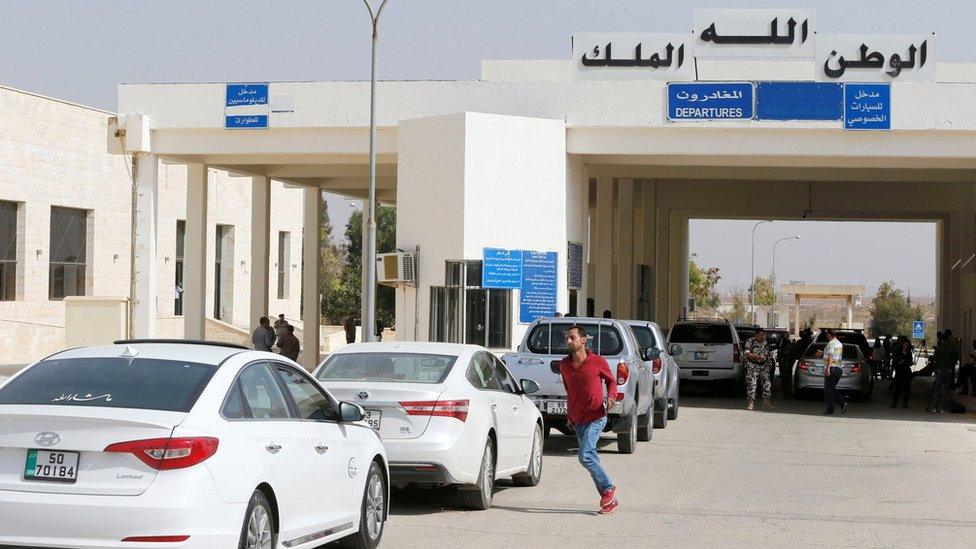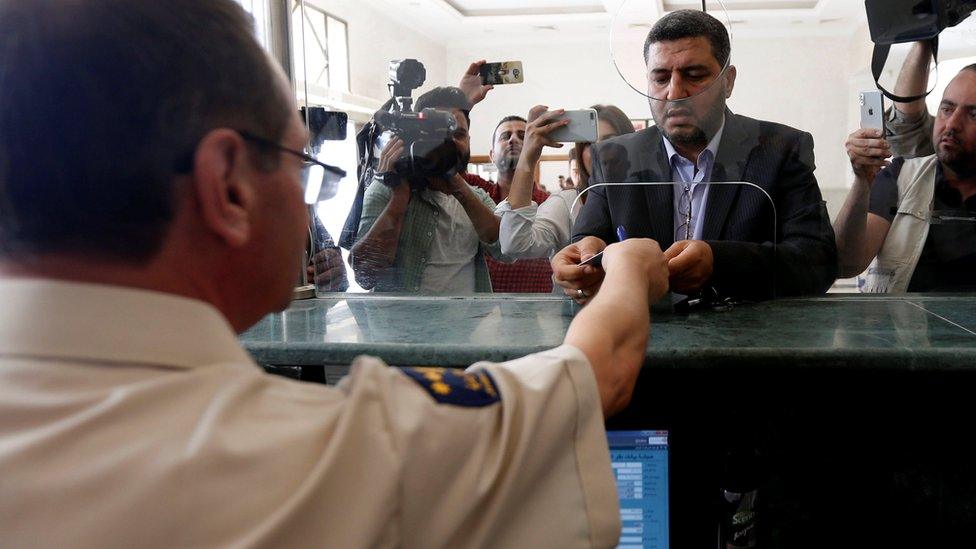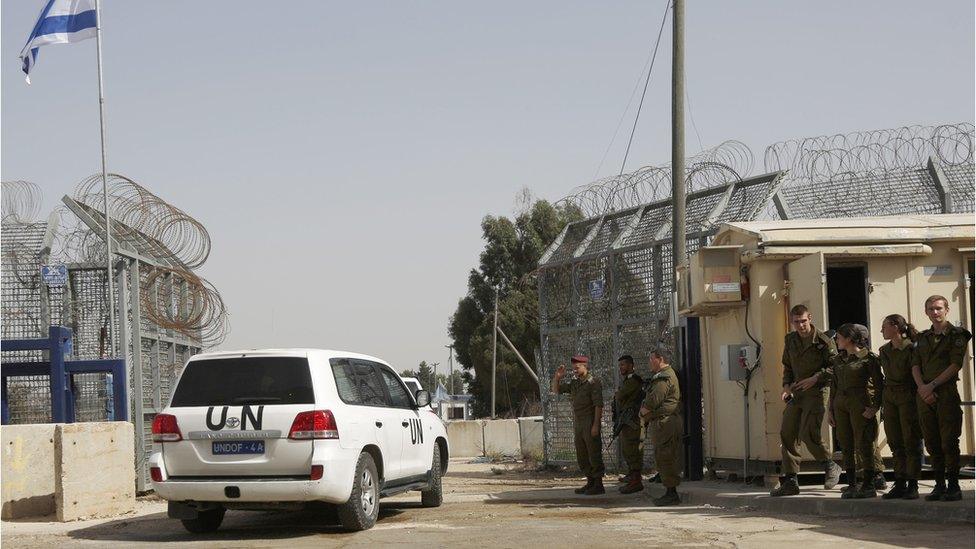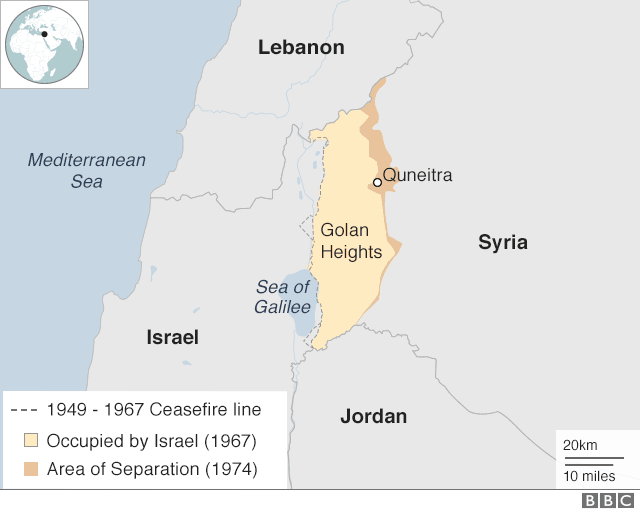Syria reopens key crossings with Jordan and Israel-occupied Golan
- Published

The Nassib crossing with Jordan was closed in 2015, when it was overrun by Syrian rebels
Syria's main crossing points with Jordan and the Israeli-occupied Golan Heights have both been reopened for the first time in several years.
A Syrian businessman living in Jordan was the first person to pass through the Nassib border post between Jordan and Syria when traffic resumed.
Syrian government forces recaptured the crossing from rebel fighters in July.
UN vehicles were also seen crossing into the Israel-occupied Golan near the Syrian town of Quneitra on Monday.
The news came as Syrian Foreign Minister Walid Muallem discussed "speeding up" the reopening of the country's border crossings with Iraq at a meeting with his Iraqi counterpart Ibrahim al-Jaafari in Damascus.

Syrians and Jordanians expressed hope that cross-border trade would be revived
The first car to cross from Jordan into Syria when the Nassib crossing reopened at 08:00 (05:00 GMT) on Monday was a black Mercedes Jeep.
The Syrian driving it, Hisham Falyoun, told AFP news agency: "I wanted to be the first person to cross to show everyone that Syria is safe, Syria is back."
Jordanian taxi driver Imad Sariheen expressed hope that the resumption of cross-border trade would help ease the "economic hardships" he had suffered.
The closure of Nassib in 2015, when it was overrun by Syrian rebel factions, cut a crucial transit route for billions of dollars of goods and had serious economic repercussions across the region.
The BBC's Martin Patience in Beirut says the reopening of the crossing will bolster the Syrian economy, which has been devastated by a seven-year civil war, and will be seen as a sign of normalisation - that Arab countries are once again willing to deal with Damascus.
Jordan supported the rebellion against Syrian President Bashar al-Assad. But he now appears close to victory, months after the Syrian army defeated opposition fighters in the southern provinces of Deraa and Quneitra with the help of Russian air strikes and Iranian-backed militias.

UN peacekeepers in the Golan seek to maintain a ceasefire between Israel and Syria
The Syrian national flag was also raised at the Quneitra crossing with the Israeli-occupied Golan Heights at a brief ceremony on Monday morning.
The UN, Israel and Syria agreed to re-open the crossing, external as part of an effort to allow UN Disengagement Observer Force (Undof) peacekeepers to carry out their mandate to maintain a decades-old ceasefire between Israel and Syria.
Israel seized most of the Golan Heights in the closing stages of the 1967 Middle East War, and thwarted a Syrian attempt to retake it in 1973. Both countries signed a disengagement agreement in 1974, which led to the establishment of Undof.


After Syria's civil war started, however, there were violations of the ceasefire with the escalation of military activity in the area of separation patrolled by Undof.
In 2014, after 45 peacekeepers were held captive for several weeks by al-Qaeda-linked jihadists and their bases attacked, Undof withdrew to the Israeli side.
The peacekeepers resumed their patrols in the area of the Quneitra crossing this August, after Syrian government forces regained control of the surrounding province and Russian military police were deployed there.